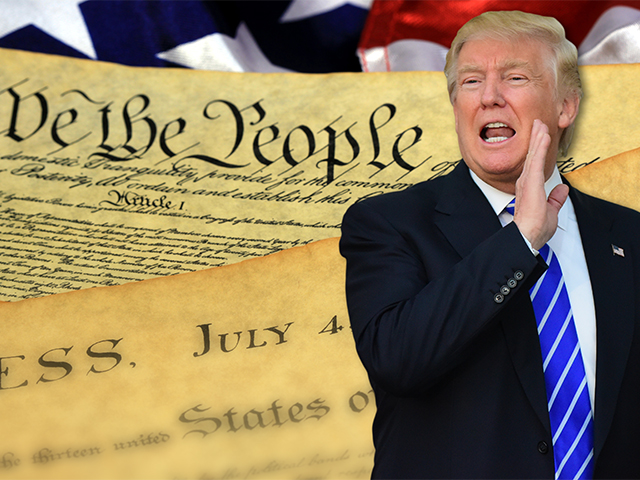
The federal government gets its operating budget by way of Congress’ passing “appropriations bills.” Those bills, which essentially contain budgets, operate just like other laws – Congress drafts them, and sends them to POTUS, where they’ll either get signed or vetoed. If signed, they become law, and things carry on. If vetoed (without a two-thirds vote to override), the government is legally required to “shut down,” unless a “continuing resolution” is passed. Such a continuing resolution is a temporary stop-gap measure that allows parts of the government to continue receiving funding at existing rates until Congress and POTUS can get their act together on the upcoming budget.
Where are we on the shutdown timeline?
There was already a continuing resolution passed, which kept the government “open” through January 19, 2018. Come Friday at midnight, though, that all expires. So either Congress passes another continuing resolution before then, or our already-orange federal government becomes even more pumpkinified.
If no continuing resolution is passed, what will actually happen?
“Shut down” sounds very dramatic, as if suddenly, Washington D.C. will turn into some sort of post-apocalyptic graveyard. But that’s not really what it means. Generally speaking, non-essential government employees (which are most government employees) will get an unpaid vacation. Some government agencies will be put on light-duty. National parks and monuments will be closed. Other stuff, though, like law enforcement agencies and military, will most likely stay open for business. And things like social security checks will still be issued.
Some of the more dramatic results could include:
- Immigration: The Department of Homeland Security will no longer operate its E-Verify program, which means that businesses will not be able to check on the legal immigration status of prospective employees during the shutdown.
- Law enforcement: The FBI would likely carry on as usual, but the Justice Department would probably suspend civil cases.
- Parks and museums: More than 400 national parks and museums would be closed.
- Regulatory agencies: Agencies like the EPA, OSHA, and the FDA may shut down completely, or may be forced to operate at minimal levels.
- Passports: Some passport agencies may be shut down
- Veterans: Some key benefits would stay in place, but many services (such as education and rehabilitation programs) could be interrupted. A long shutdown has the potential to affect disability claims and pension payments to veterans.
- Women, Infants, and Children: The WIC program, helps pregnant women and new mothers with food costs would likely be threatened soon after a shutdown.
Is any of this really all that bad?
It all depends on your definition of “bad.” Your friend who works as an administrative assistant for the EPA and your neighbor who is a clerk at the Federal Reserve probably won’t be too thrilled about their being expected to forego their next paychecks. But if you’re someone who focuses more on the big picture of the American political landscape, you may find the shutdown to be positive. President Trump would be likely to spin a shutdown as proof positive of his negotiating acumen and unwavering resolve to deliver on campaign promises; if you are someone who deeply values funding of Trump’s border wall, or someone who deeply opposes continuation of DACA, you may applaud the president for taking a firm stand. On the other hand, if you are more of a fan of compromise, you’ll likely view a shutdown as tangible evidence of a dysfunctional government that lacks a good excuse for why its Republican Congress can’t seem to agree with its Republican president.
Whose fault would a shutdown be?
As any seasoned talking head can tell you, fault is in the eye of the beholder. Many will argue that President Trump would bear ultimate responsibility, given that a shutdown would result most directly from a presidential veto. Others will throw blame toward Congressional Democrats for refusing to back down from their budgetary demands.
How long would a shutdown last?
That’s anyone’s guess. It could literally last just for the weekend (which, as Stan Collender pointed out at Forbes, might be just long enough for President Trump to declare himself an executive badass, and then sign the same continuing resolution that was presented to him earlier in the week). It could go on longer, too, of course – as the shutdowns of 1995 and 2013 did.
Who holds the most control during a shutdown?
The President. Although the executive and legislative branches of government have [at least theoretically] equal power to effectuate legislation, only the president has the authority to pronounce federal services are “essential,” or “non essential.” Therefore, it will be up to President Trump to decide which federal agencies or employees would come to a screeching halt, and which would continue as usual. While the political prelude to a shutdown necessarily includes widespread foot-stomping, POTUS alone has the power to define the scope of the damage.
As my Law & Crime colleague Colin Kalmbacher so eloquently put it, a government shutdown “is a form of shock doctrine politics–using an imaginary crisis to exact concessions from political opponents.” As our president continues to feel the effects of his ill-advised comments a few days ago, an imaginary crisis may be just what he craves.